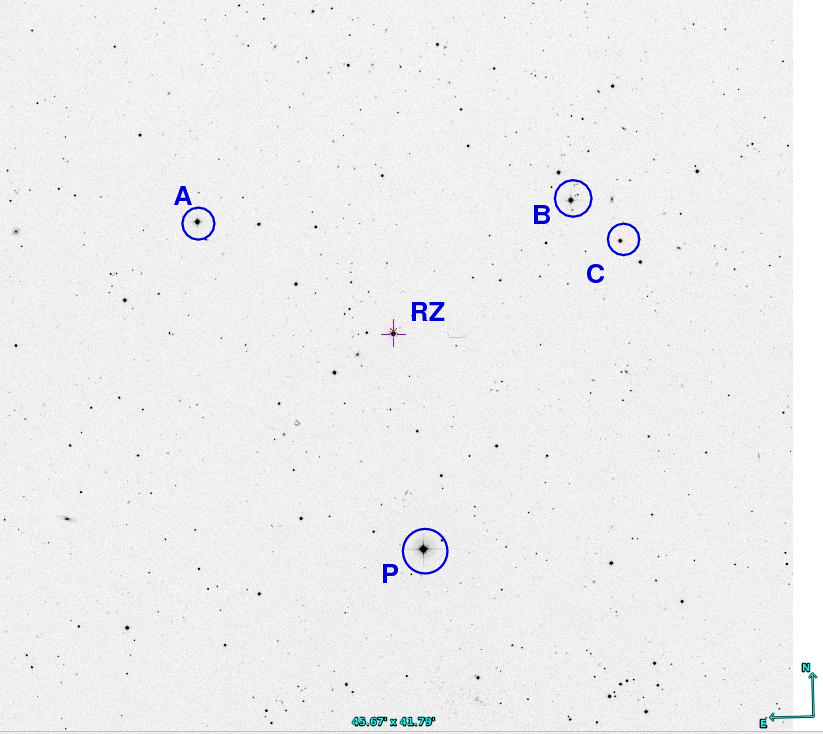
On the night of Apr 20/21, 2018, students in the Observational Astronomy class measured the eclipsing binary star RZ Com over half of its orbital period. Later, in the wee hours of the morning, I acquired a set of observations of the likely black-hole system MAXIJ1820+070, (also known as ASASSN-18ey ). There was a bit of light cloud over the sky early, but overall, it was quite nice.
The main setup was:
Notes from the night:
The object is located at
RA = 12:35:05.0595 Dec = +23 20 14.028
A chart of the field is shown below. The size of the chart is about 40 by 40 arcminutes.

I've marked the location of several comparison stars, which also appear in light curves below. Star "P" is the bright star HD 109498 at V=8.7. It's saturated in the RIT images.
star name B V ---------------------------------------------------- A BD+24 2476 11.255 10.586 B UCAC4 568-049998 10.999 10.531 C UCAC4 568-049992 12.662 12.107 ----------------------------------------------------
There was a small problem in the middle of the observing run: the dome slit was allowed to slide past the telescope, blocking the starlight from reaching it. You can see the effect of this gradual occultation in the graph below, which plots the photometric zero point on the y-axis and time on the x-axis.
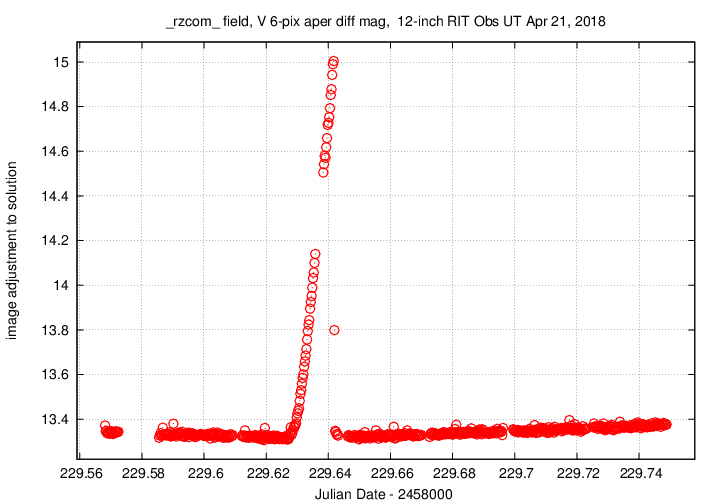
Look at the strange patterns in the light curves of comparison stars during this time!
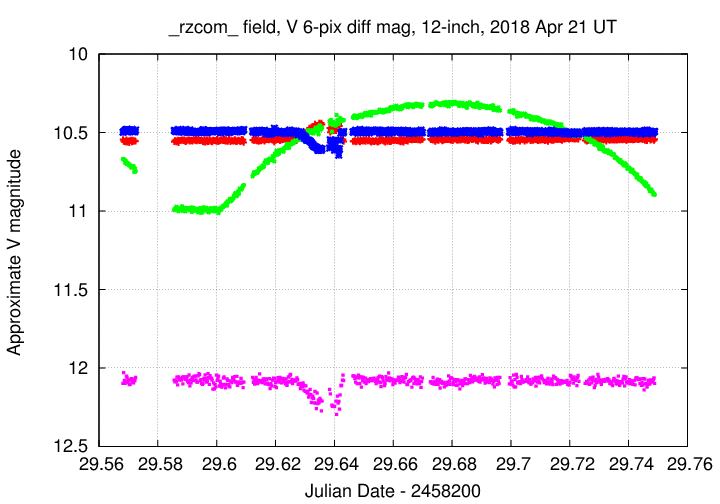
The main setup was:
Notes from the night:
This optical and X-ray and radio transient is likely a black hole accreting material at a higher-than-usual rate. It has been the subject of many observers over the past two weeks -- see the trail of telegrams that include
The object is located at
RA = 18:20:21.9 Dec = +07:11:07.3
A chart of the field is shown below. The size of the chart is about 22 by 18 arcminutes.
I've marked the location of several comparison stars, which also appear in light curves below. Stars C, D, and E are mentioned by the Tomoe Gozen team in ATel 11426, but all three are rather red, with (B-V) ranging from 1.14 to 1.37. Star B is one of the bluest nearby bright stars, with (B-V) = 0.52.
star UCAC4 B V ---------------------------------------------------- B 486-079513 12.975 12.454 C 486-079608 13.968 12.830 D 486-079523 14.637 13.272 E 487-077858 14.637 13.272 ----------------------------------------------------
The dark current was ordinary.

The smooth sky value indicates that any clouds were very thin.

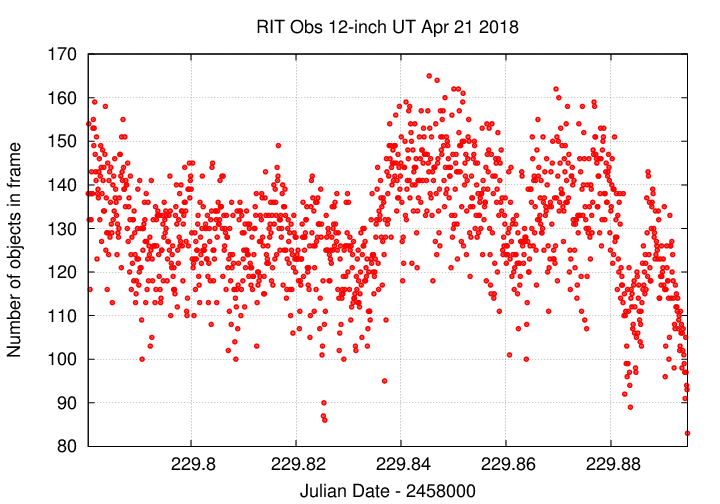
I used an aperture with radius 3.0 pixels.

Image adjustment factor shows a few light clouds.
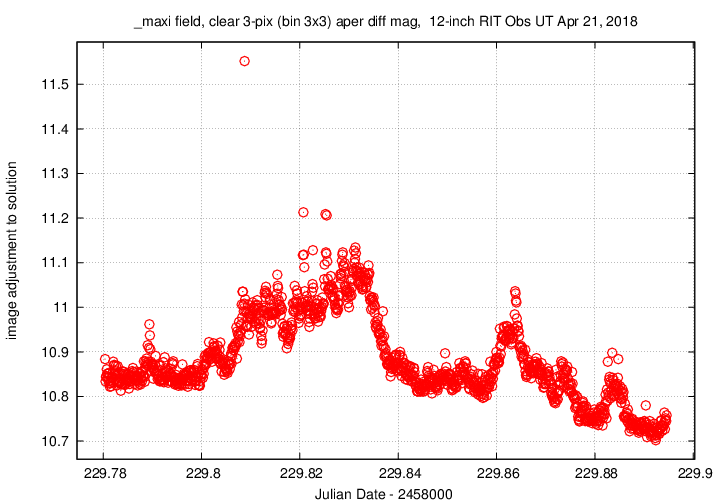
Using aperture photometry with a radius of 3 pixels (binned 3x3, each pixel is 1.98 arcsec, so a radius of 5.9 arcsec), I measured the instrumental magnitudes of a number of reference stars and the target. Following the procedures outlined by Kent Honeycutt's article on inhomogeneous ensemble photometry, I used all stars available in each image to define a reference frame, and measured each star against this frame.
Sigma-vs-mag plots show that the floor was about 0.008 mag overall -- that's about the best I've seen with 5-second exposures. The brightest outlier is a saturated star, and the outlier around instrumental magnitude 4 is MAXI J1820+070.
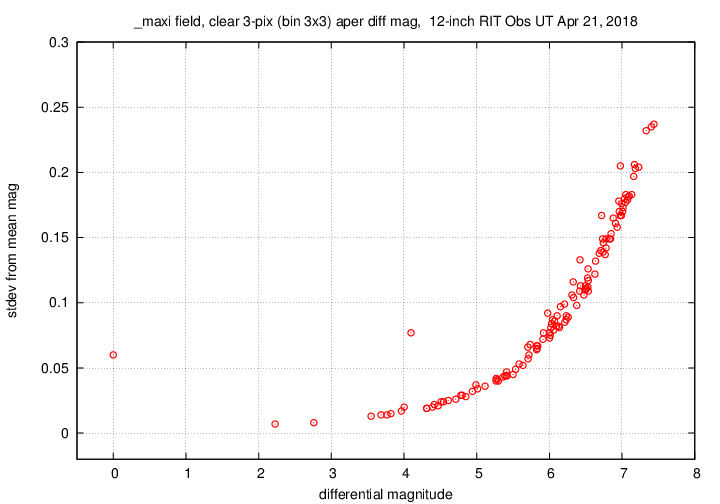
Here are light curves of the variable and the field stars.
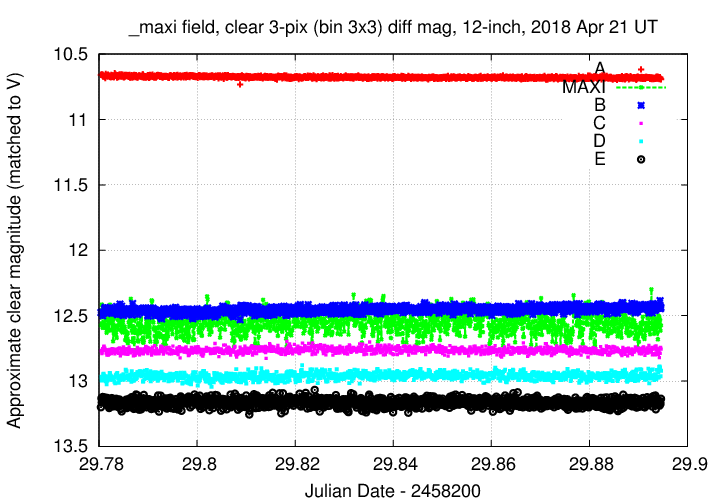
I used the UCAC value for the V-band magnitude of star "B" = UCAC4 486-079513 to shift the ensemble magnitudes to the standard V-band scale -- but remember that these are UNFILTERED measurements.
Here's a closeup on the variable. I'll connect the dots to make its behavior a bit easier to see. Note, as usual, that star B (and presumably the variable) creep up in brightness as they rise out of the East, due to differential extinction and their blue color.
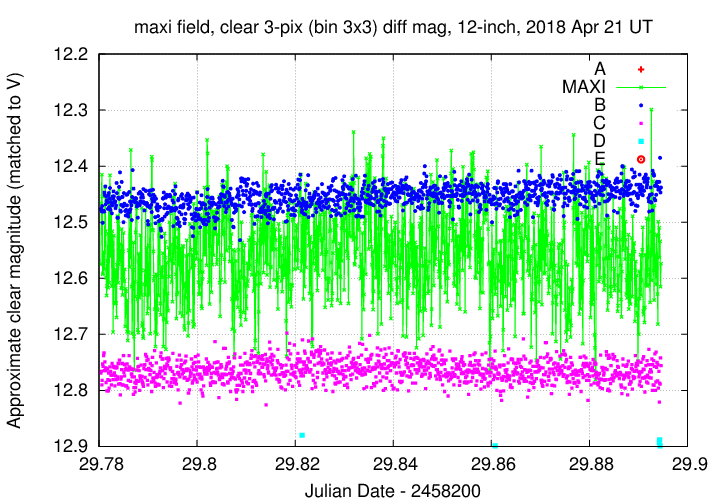
A very short section of the light curve shows some of the variations more clearly.
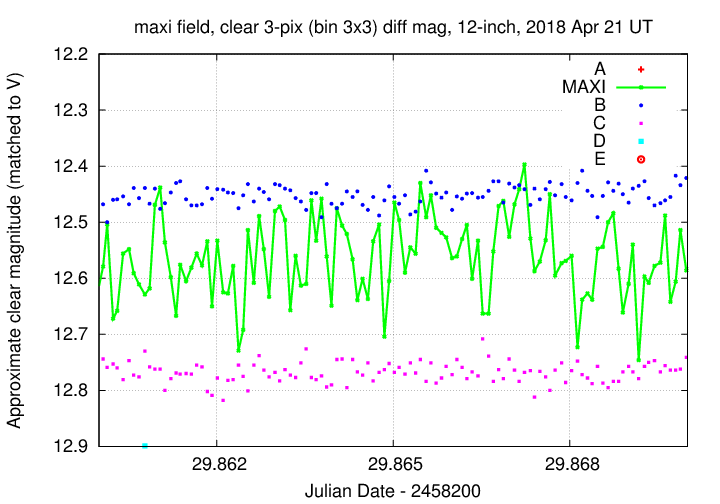
You can download my measurements below. A copy of the header of the file is shown to explain the format. I've removed the measurements taken during the bright sky at dawn, after JD 820.890.
# Measurements of MAXIJ1820+070 made at RIT Obs, UT 2018 Apr 21, # in good conditions, # by Michael Richmond, # using Meade 12-inch LX200 and ATIK 11000. # Exposures 5 seconds long, no filter. # Tabulated times are midexposure (FITS header time - half exposure length) # and accurate only to +/- 1 second (??). # 'mag' is a differential magnitude based on ensemble photometry # using a circular aperture of radius 3 pix = 5.9 arcseconds. # which has been shifted so UCAC4 486-079513 has mag=12.454 # which is its V-band magnitude according to UCAC4. # # UT_day JD HJD mag uncert Apr21.28039 2458229.78039 2458229.78250 12.575 0.019 Apr21.28049 2458229.78049 2458229.78260 12.467 0.019 Apr21.28058 2458229.78058 2458229.78269 12.415 0.017
Last modified 4/21/2018 by MWR.